|
|
|
Sort Order |
|
|
|
Items / Page
|
|
|
|
|
|
|
| Srl | Item |
| 1 |
ID:
106232
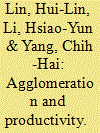

|
|
|
|
|
| Publication |
2011.
|
| Summary/Abstract |
Is the spatial concentration of manufacturing activity able to enhance firm-level productivity? This question is particularly relevant to production in China, which has a huge territory and population, but a skewed distribution in terms of urban-rural development. This paper aims to examine the dynamics of industrial agglomeration and the impact of agglomeration on firm-level productivity in China's textile industry by using a firm-level panel dataset from 2000 to 2005. First, the average value of the Ellison-Glaeser (EG) index (city level) is found to be approximately 0.00019. Moreover, the calculated city EG index of spatial concentration for each year exhibits a decreasing trend of spatial agglomeration for garments and other fiber products, but an increasing trend for the textile industries' agglomeration in China. The above findings are similar to the findings of Lu and Tao (2009). Secondly and importantly, this study finds an inverted U-shape relationship between agglomeration and productivity. It suggests that while industrial agglomeration enhances firms' productivity, agglomeration diseconomies may appear if the degree of agglomeration is too high.
|
|
|
|
|
|
|
|
|
|
|
|
|
|
|
|
| 2 |
ID:
143433
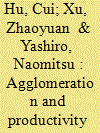

|
|
|
|
|
| Summary/Abstract |
This paper conducts an in-depth evaluation on the role of industrial agglomeration in productivity growth of China's industrial sector by exploiting large dataset of manufacturing firms active in 176 three-digit industries and in 2860 counties. We also complement our analysis with the 2004 Census data to capture the agglomeration of small firms. Unlike previous studies that often focused on specific industries, we assess the impact of agglomeration in a comprehensive range of industries and extend the scope of analysis to upstream industries as well. Moreover, we explore how the ownership of Chinese firms shapes their ability to benefit from agglomeration effect as well as to act as the source of externality. We find that congestion and fiercer competition offset the benefits of agglomeration for firms operating within agglomerated regions. On the other hand, a co-location of large firms contributes significantly to productivity. We also find a more important contribution from the agglomeration of upstream industries than from that of the same industry. Private enterprises are the primary source of agglomeration effects especially in upstream industries, whereas their productivity is boosted most by the agglomeration of other private enterprises. We reckon that industrial agglomeration contributed up to 14% of the productivity growth in China's industrial sector between 2000 and 2007.
|
|
|
|
|
|
|
|
|
|
|
|
|
|
|
|
| 3 |
ID:
116510
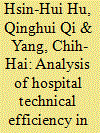

|
|
|
|
|
| Publication |
2012.
|
| Summary/Abstract |
This paper investigates the regional hospital efficiency in China during the 2002-2008 period, especially for how the health insurance reform of New Rural Cooperative Medical System (NRCMS) impacts on efficiency. Adopting the non-parametric technique of data envelopment analysis (DEA) to handle the feature of multiple outputs and undesirable outputs in the hospital industry, empirical estimates indicate that hospital efficiency is moderate that increased slightly from 0.6777 to 0.8098 during the sample period. However, it ranges widely from 0.396 to 1 across provinces. The regression analysis on examining determinants of efficiency suggests that a higher proportion of for-profit hospital and high quality hospital is helpful to enhance technical efficiency. We find a negative relationship between government subsidy and efficiency for coastal regions. While technical efficiency varies considerable across provinces, there is no significant difference between coastal and non-coastal regions being found, after controlling for other variables. Crucially, the medical reform of NRCMS overall has a significant efficiency-enhancing effect, particularly for non-coastal regions, ceteris paribus. It highlights the effectiveness of NRCMS on promoting medical service accessibility for rural residents.
|
|
|
|
|
|
|
|
|
|
|
|
|
|
|
|
| 4 |
ID:
092547
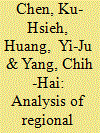

|
|
|
|
|
| Publication |
2009.
|
| Summary/Abstract |
This paper analyzes the dynamics of China's productivity for the period 1996-2004 with a newly developed methodology - generalized metafrontier Malmquist productivity index (gMMPI). Implementing the gMMPI, this paper reviews the inequality of the coastal and non-coastal provinces, as well as the latent impact of scale efficiency change (SEC) for China. Using provincial data for the years 1996-2004, the empirical results are as follows. On average, China demonstrates an annual 3.191% productivity change, which is lower than 4.729% for the conventional MPI and accounts for about 26.508% of output growth over the period 1996-2004. Most of this change is propelled by technical progress, while a fraction is driven by the adjustment in production scale, and the efficiency change has an adverse effect. Furthermore, regional inequality is also found in this empirical work, and the productivity change of the coastal region is actually stronger than that of the non-coastal region. This paper also casts some focus on the China Western Development policy. Indeed, we do not find any outstanding achievement from the policy in the sample period, except that the west region sustained its rate of productivity change after 2000. Moreover, the SEC is found to be trivial in the advanced coastal region, but plays an important role in the relatively laggard non-coastal region. The implication of the positive SEC in the non-coastal region means that China's Western Development policy will improve the scale efficiency and the TFP growth of the west region.
|
|
|
|
|
|
|
|
|
|
|
|
|
|
|
|
| 5 |
ID:
158547
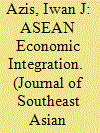

|
|
|
|
|
| Summary/Abstract |
Over the past five decades, the Association of Southeast Asian Nations (ASEAN) has made tremendous economic progress. While the continuous improvements in the region’s macroeconomic indicators might give the impression that this growth trend can be sustained smoothly in the long run, that might not necessarily be the case. In this paper, three imminent challenges are discussed — changing patterns of investment, slowing productivity, and the China factor. For the Association to cope with these risks and forge new development paths, structural reforms within, and deeper integration between its member states are imperative.
|
|
|
|
|
|
|
|
|
|
|
|
|
|
|
|
| 6 |
ID:
101162
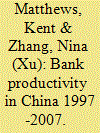

|
|
|
|
|
| Publication |
2010.
|
| Summary/Abstract |
This study examines the productivity growth of the nationwide banks of China and a sample of city commercial, banks for the ten years to 2007. Using a bootstrap method for the Malmquist index, estimates of the total factor productivity growth are constructed. Five different models of inputs and outputs based on variants of the Intermediation and Production approaches and non-performing loans are treated as a bad output, are examined for the purpose of arriving at a robust measure. The productivity growth of the state-owned commercial banks (SOCBs) is compared with the joint-stock banks (JSCBs) and city commercial banks (CCBs). In general, average TFP growth has been neutral over the period for the SOCBs and JSCBs but positive for the CCBs in the second part of the period. Efficiency gains (catch-up) were obtained through cost reduction and technical innovation was associated with greater diversification of revenue away from interest earnings. The opening up of the banking market has not led to a discernible improvement in bank productivity growth.
|
|
|
|
|
|
|
|
|
|
|
|
|
|
|
|
| 7 |
ID:
122070


|
|
|
|
|
| Publication |
2013.
|
| Summary/Abstract |
The article deals with the dream and the reality during the development of vocational education in Israel from 1948 to the end of the twentieth century and refers both to education for manual labour as a value and to the attempt at practical guidance of students towards productivity and vocational education. It describes the gap between leaders' statements - declaring their commitment to educate the younger generation to be productive and work oriented - and the actual focus on policies of expanding academic high schools while marginalizing vocational schools time and time again.
|
|
|
|
|
|
|
|
|
|
|
|
|
|
|
|
| 8 |
ID:
187810
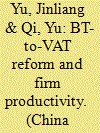

|
|
|
|
|
| Summary/Abstract |
China recently initiated a major tax reform to convert business tax to value-added tax (BT-to-VAT reform), which opened up the tax deduction chain between industries. We used difference-in-differences model and an administrative firm-level dataset from 2011 to 2017 to explore the effect of BT-to-VAT reform on productivity. We found that in contrast to control firms, this reform increased the productivity of the treated firms by 14.6% on average. The positive effects tended to be strengthened in private, large-scale, and capital-intensive firms, as well as in firms with tight financing constraints. Moreover, these positive results of the BT-to-VAT reform appeared to be driven by its positive effect on fixed asset investment, R&D expenditure, and specialization. These findings demonstrate the transformation of tax system has multiple economic effects in developing countries.
|
|
|
|
|
|
|
|
|
|
|
|
|
|
|
|
| 9 |
ID:
138137
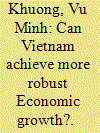

|
|
|
|
|
| Summary/Abstract |
This paper conducts a comparative analysis of economic reforms in Vietnam and China to gain insights into critical reform areas that are imperative for Vietnam to achieve more robust economic growth. This study finds that the growth gap between the two countries has been substantial not only for GDP but also for labour productivity and total factor productivity, both of which are essential for sustainable economic performance in the long term. The main causes behind the growth disparity between Vietnam and China are governance-related factors, namely government effectiveness, regulatory quality, administrative reforms, state-owned enterprise reforms and policy experimentation efforts, along with induced elements such as education and technological upgrading. While China’s stronger performance does not imply that Vietnam should embrace the former’s growth model, the considerable performance gap between the two countries suggests that Vietnam has great potential to accelerate its own economic growth. The insights and discussion from this study indicate that Vietnam can achieve far more robust growth if it launches a new wave of reforms to effectively strengthen the aforementioned factors. This paper provides a suite of relevant and actionable policy recommendations for Vietnam to embark on this endeavour.
|
|
|
|
|
|
|
|
|
|
|
|
|
|
|
|
| 10 |
ID:
121547
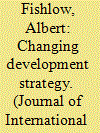

|
|
|
|
|
| Publication |
2013.
|
| Summary/Abstract |
Latin America experienced high rates of growth in the first decade of the twenty-first century. Will the region-increasingly split into Atlantic and Pacific countries with different policies-be able to continue this pace into the future? That will depend upon high rates of investment, regulatory stability, and openness to technological advancement to sustain gains in productivity and permit continued improvements in income distribution.
|
|
|
|
|
|
|
|
|
|
|
|
|
|
|
|
| 11 |
ID:
164723


|
|
|
|
|
| Summary/Abstract |
This paper investigates the impact of China's city size and urban population concentration on city productivity by developing a distinctive index based on global nighttime light data. Using the panel data of 280 prefecture cities from 2004 to 2013 and employing dynamic system generalized method of moments and panel threshold model regression techniques, our results show that city size has a positive impact on city productivity; therefore, cities in China still have the potential to expand. While moderate urban population concentration can benefit city productivity, excessively concentrated urban population distribution may impede the growth of city productivity. We also find that the level of labor income significantly affects the impacts of urban agglomeration on labor productivity. Therefore, our results imply that city development policies should focus more on how to appropriately allocate economic activities and adjust population distribution in urban areas according to different stages of economic development.
|
|
|
|
|
|
|
|
|
|
|
|
|
|
|
|
| 12 |
ID:
066645
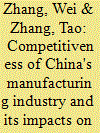

|
|
|
| 13 |
ID:
090813
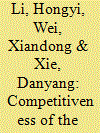

|
|
|
|
|
| Publication |
2009.
|
| Summary/Abstract |
Our assessment of the competitiveness of the Hong Kong economy from various perspectives indicates that the overall competitiveness of Hong Kong economy has been improving during the past several years. However, from a longer term historical perspective, there are still a number of areas in which Hong Kong's competitiveness has been eroded relative to her main competitors in East Asia, especially in export sector. On the aggregate level, although Hong Kong's total factor productivity (TFP) growth rate is amongst the best performers in East Asia in the recent years, it has been adversely affected by the continuing relocation of Hong Kong's manufacturing production to the Mainland China. On sectorial levels, Hong Kong's competitiveness deteriorated in several important categories of goods and service exports. Overall, our study shows that the Hong Kong economy still maintains its resilience to outside shocks, nevertheless it needs to explore new areas to fuel its future growth.
|
|
|
|
|
|
|
|
|
|
|
|
|
|
|
|
| 14 |
ID:
116233


|
|
|
|
|
| Publication |
2012.
|
| Summary/Abstract |
This paper analyses the military expenditures in Italy over the period 1988-2008. The estimation of a conventional model of military expenditure shows that the choices of military expenditure by Italian governments are influenced by US and, to a lesser extent, the other NATO countries' defence spending. In particular, the negative association between the US and NATO average military expenditure on the Italian one suggests a free-rider behaviour of Italy. Eventually, we focus on the relationship between productivity and military expenditure. The results suggest that there is a negative association between productivity and military expenditures in the long run. Namely, if military expenditures were substituted by civilian expenditures, the Italian overall productivity would be expected to improve.
|
|
|
|
|
|
|
|
|
|
|
|
|
|
|
|
| 15 |
ID:
144156
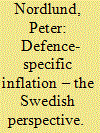

|
|
|
|
|
| Summary/Abstract |
This article uses a Swedish perspective and context to illustrate general, theoretical and applied, discussions on defense-specific inflation, productivity in defense, cost escalation of defense equipment, absolute and relative defense capability plus the construction and use of defense price indices. Sweden uses a Defense Price Index (FPI) which is a composite index of different civilan, non-defense, indices to “automatically” adjust the defense budget for price changes. This should ideally allow decision makers to concentrate on incremental decisions and their economic consequences when deciding on a new defense budget. This approach requires a high precision from FPI in targeting defense inflation. The problems with achieving such a precise index are illustrated in the article. Critical points, in particular, are defining and measuring productivity in defense and price and/or cost escalation of defense equipment. Another complication is that defense, and not only defense equipment, is a “tournament good” where the most important capability is the relative capability compared mainly with potential opponents in military conflicts and not the absolute capability. Since Sweden recently abolished conscription there are reflections on opportunity costs of conscription in the article as well as results from Swedish and other studies on cost escalation of defense equipment.
|
|
|
|
|
|
|
|
|
|
|
|
|
|
|
|
| 16 |
ID:
078030
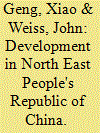

|
|
|
|
|
| Publication |
2007.
|
| Summary/Abstract |
Regional disparities within China are now an important policy question. Recently the three provinces of the north-east region have been identified as priority areas for regional development, along with the Western part of the country. The north-east is the old industrial heartland of the country and its economy is based around heavy industry, mineral extraction and state owned enterprises. This paper uses a unique database on medium and large-scale enterprises to establish how far enterprise performance in the north-east differs from the national average and the reasons for any such differences. It finds that even allowing for industrial structure and ownership, performance in the north-east is significantly below that in the rest of the country. This is attributed to aspects of the investment climate in the region.
|
|
|
|
|
|
|
|
|
|
|
|
|
|
|
|
| 17 |
ID:
161840
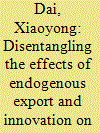

|
|
|
|
|
| Summary/Abstract |
This paper disentangles the effects of export and innovation on firm-level markup and productivity. Based on a large sample of Chinese manufacturing firms, we explicitly account for firms' endogenous export and innovation decisions, and isolate their impacts on firms' future performance, using a propensity score matching approach with multiple treatments. The results indicate that starting to export alone negatively affects firm-level markup and productivity, while starting to innovate alone has a significant positive impact. There is a complementarity between export and innovation in improving firms' performance. The negative effect of starting to export alone on revenue productivity may reflect the decrease of price-cost markup, rather than a change in physical productivity. Our study contributes to explaining puzzling results of exporter performance for China. The results also suggest that firms should establish domestic market power through innovation before turning to export markets.
|
|
|
|
|
|
|
|
|
|
|
|
|
|
|
|
| 18 |
ID:
143412


|
|
|
|
|
| Summary/Abstract |
Knowledge spillover from the agglomeration of exporters can reduce the initial costs of exporting faced by other firms and thereby facilitate exports. We use a large dataset of Chinese manufacturing firms to assess whether industrial agglomeration lowers the minimum productivity level required for exporting and whether it increases a firm's probability of exporting. Semi-parametric quantile regressions reveal that the productivity advantage of exporters against non-exporters is markedly smaller in agglomerated regions. Furthermore, a parametric estimation of an export entry model indicates that the agglomeration of incumbent exporters contributes significantly to export participation, although its magnitude is limited. These spillover effects are generated not only by the agglomeration of exporting foreign invested firms (FIFs), but also, more importantly, by that of indigenous Chinese exporters. In fact, the agglomeration of exporting FIFs only contributes to the export entry of FIFs.
|
|
|
|
|
|
|
|
|
|
|
|
|
|
|
|
| 19 |
ID:
138138
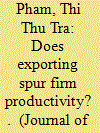

|
|
|
|
|
| Summary/Abstract |
This study uses data on Vietnamese manufacturing firms from the World Bank Enterprise Surveys for the period 2002–08 to examine causality between export participation and firm productivity. The analysis focuses on the three hypotheses related to the relationship between exporting and firm productivity that have received attention in the literature, namely: self-selection; learning-by-exporting; and core competence hypotheses. In this case study, evidence is found in support each of these hypotheses, which are often portrayed as competing with each other but are in fact complementary. It is found that comparative advantage, which in the case of Vietnam — a labour-abundant, low-wage country — is in labour-intensive products, is central to understanding each of the three hypotheses. The firms that have relatively high productivity (ex ante) and accordingly self-select to export are those that produce in line with Vietnam’s comparative advantage (i.e., firms that are relatively labour-intensive). Firms that experienced a relatively large increase in export intensity are found to have experienced higher total factor productivity, supporting the learning-by-exporting hypothesis, and a relatively large increase in labour intensity, supporting the core competence hypothesis and the central role of comparative advantage.
|
|
|
|
|
|
|
|
|
|
|
|
|
|
|
|
| 20 |
ID:
168341
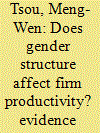

|
|
|
|
|
| Summary/Abstract |
This study examines the impact of gender workforce composition on firm productivity. Using a large sample of Chinese manufacturing firms and conditional on human capital-related controls, we find that firms with a greater share of female workers demonstrate lower productivity. However, our results suggest that increasing the fraction of highly educated female workers significantly improves firm performance. This effect is evident for all private firms regardless of their trade orientation and foreign firms undertaking purely domestic sales. However, the effect does not exist in the case of state-owned and export-oriented foreign enterprises. Compared with medium-sized and large firms, small firms benefit more from gender diversity at high education level. Finally, the share of highly talented female workers indicates better firm performance in more feminized industries.
|
|
|
|
|
|
|
|
|
|
|
|
|
|
|
|
|
|
|
|
|